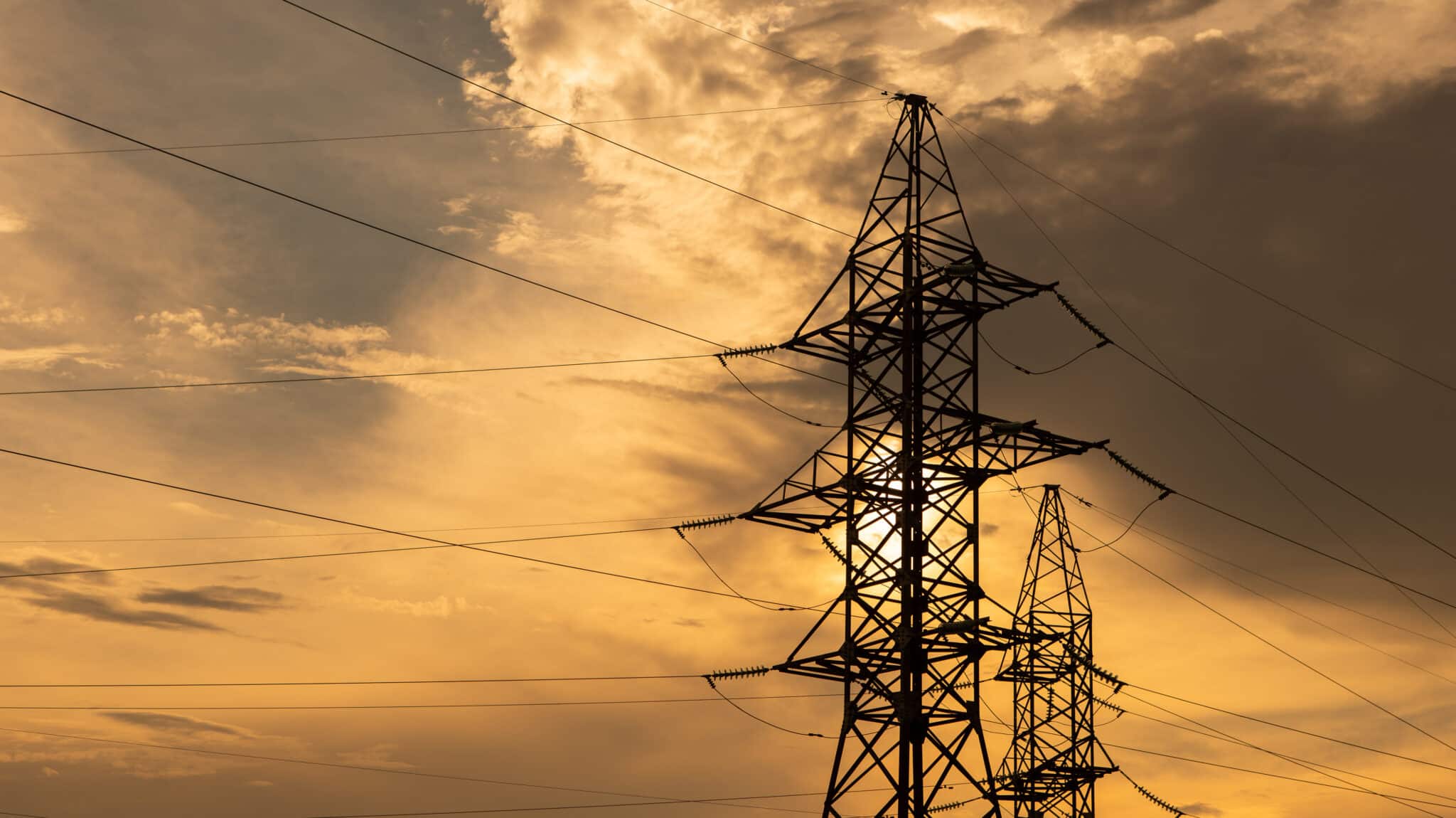Understanding the electricity timeline is not just a dive into the annals of history, it’s a crucial aspect of our daily lives, especially in our modern, power-dependent world. From the bustling streets of Greenville, SC, to the serene landscapes of Fountain Inn, the way we interact with electricity shapes our experiences, safety, and wallet. Knowing when and how electricity flows through our communities isn’t merely academic, it’s a practical necessity for both professionals in the field and homeowners alike. This knowledge informs decisions that affect everything from monthly billing cycles to the overall reliability of the power grid.
The electricity timeline reveals the evolution of power usage and distribution, shedding light on why certain practices are in place today. It’s a story that impacts everyone, whether you’re flipping a switch in Greenville or setting up a new appliance in Fountain Inn. By understanding this timeline, individuals can make more informed choices about their energy consumption, leading to potential savings and increased efficiency. It’s not just about knowing what happens, but understanding the why behind it.
For professionals working within the electrical industry, the electricity timeline serves as a foundational element of their expertise. It informs best practices, safety protocols, and innovative solutions to modern challenges. This knowledge is crucial in ensuring that the infrastructure supporting our cities is both robust and capable of meeting the demands of its users. Whether planning a major upgrade or performing routine maintenance, a deep understanding of how we’ve come to our current state of electrical affairs is indispensable.
Similarly, homeowners benefit from grasping the basics of the electricity timeline. It empowers them to make smarter decisions about their power use, potentially leading to lower energy bills and a smaller carbon footprint. In a world where efficiency and sustainability are increasingly important, understanding the past and present of electricity can guide us toward a brighter, more reliable future. Thus, the electricity timeline remains a key piece of knowledge for anyone looking to navigate the complexities of modern living, from the heart of Greenville, SC, to the quiet streets of Fountain Inn.

The Evolution of the Electricity Timeline
The evolution of the electricity timeline is a fascinating journey that has significantly shaped our current lifestyle and the way we manage energy. From the early days of discovering electricity to the establishment of the first power grids, each milestone has brought us closer to a more connected and efficient world. In Greenville, SC, this evolution is evident in the advanced infrastructure that powers homes and businesses, showcasing the progress from simple electric circuits to complex networks. Understanding this progression helps us appreciate the reliability and convenience we enjoy today.
As we delve deeper into the electricity timeline, we uncover the critical shifts that have led to improvements in safety standards and efficiency. The introduction of regulations and the development of new technologies have made electricity safer and more accessible than ever before. In Fountain Inn, for example, residents benefit from these advancements through consistent and safe power supply, reflecting the positive outcomes of historical progress. By recognizing these changes, we can better understand the importance of ongoing innovation and adherence to safety protocols.
The impact of the electricity timeline extends beyond technical advancements, it also influences economic and environmental aspects. The shift towards renewable energy sources and the implementation of smart grids are examples of how historical knowledge informs current practices. These developments not only enhance grid reliability but also promote sustainable use of resources, aligning with the growing demand for green energy solutions. This shift is crucial for both professionals in the electrical industry and homeowners, as it guides decisions towards more eco-friendly and cost-effective power usage.
Finally, the electricity timeline serves as a roadmap for future advancements. By learning from past challenges and successes, we can anticipate the needs of tomorrow’s power grid and prepare for them effectively. This forward-thinking approach ensures that our infrastructure not only meets today’s demands but is also adaptable to future innovations and changes. Whether it’s improving grid resilience or integrating new energy sources, the lessons from the electricity timeline empower us to build a more efficient, safe, and sustainable power system for generations to come.
How Electricity Billing Cycles Affect You
Understanding the electricity timeline is crucial when it comes to billing cycles, especially in places like Greenville, SC. Your bill reflects how and when you use electricity, often influenced by peak and off-peak hours. By knowing these cycles, you can adjust your usage to benefit from lower rates during off-peak times. This not only saves money but also encourages smarter energy consumption.
In Fountain Inn, for example, residents can leverage this knowledge to operate high-energy appliances during times when electricity is cheaper. This practice not only reduces strain on the household budget but also on the power grid. It’s a simple yet effective way to enhance efficiency and ensure that energy resources are used wisely. Plus, it aligns with broader efforts to make energy use more sustainable.
The electricity timeline also plays a role in how energy providers plan and manage the grid. They analyze consumption patterns to predict demand and adjust supply accordingly. This helps maintain grid reliability and prevents outages, ensuring that homes and businesses receive a steady supply of power. Understanding these cycles can help communities support these efforts, contributing to a more stable and reliable energy system.
Lastly, being informed about the electricity timeline allows for more engaged conversations with your energy provider. You can ask informed questions, seek out the best rates, and even advocate for changes that could benefit your community. Whether you’re in Greenville, SC, or Fountain Inn, this knowledge empowers you to take control of your energy use, leading to a more efficient and cost-effective relationship with electricity.
Understanding Peak Hours and Your Power Use
The electricity timeline isn’t just a historical concept, it directly influences the efficiency and safety of our power use today. In Greenville, SC, understanding the flow of electricity helps residents and professionals alike make informed decisions. This knowledge aids in optimizing energy consumption, leading to not only cost savings but also enhanced grid reliability. It serves as a guide for better energy practices, ensuring we use power wisely and sustainably.
For those in Fountain Inn, the electricity timeline sheds light on the importance of energy efficiency measures. By familiarizing themselves with how electricity has evolved, homeowners can adopt more eco-friendly habits. This not only reduces their carbon footprint but also supports the transition to renewable energy sources. It’s a step towards a greener, more sustainable future, reflecting the ongoing evolution of our relationship with electricity.
Moreover, the electricity timeline influences the development of new technologies and safety standards. By looking back at the milestones in electrical history, engineers and technicians can innovate with an eye towards safer, more reliable power solutions. This ongoing innovation ensures that our electrical systems can meet today’s needs while being prepared for tomorrow’s challenges. It’s a testament to the power of historical knowledge in driving forward-looking changes.
Lastly, the electricity timeline empowers communities to participate actively in their energy consumption choices. Residents of Greenville, SC, and Fountain Inn can engage with their energy providers from a place of knowledge, advocating for practices that align with efficient and sustainable use. This engagement is crucial for shaping a future where energy is not only reliable and affordable but also environmentally responsible. It highlights the significance of understanding our electrical past and present for a brighter, more sustainable future.
The Impact of Historical Blackouts on Today’s Grid
Historical blackouts have left a lasting impact on today’s power grid, teaching us valuable lessons about resilience and preparedness. In Greenville, SC, these events underscore the importance of a robust infrastructure that can withstand high demand and unforeseen disruptions. They highlight the need for continuous innovation in grid technology, ensuring reliability and safety for all users. These lessons from the past guide current efforts to strengthen our electrical systems against similar challenges.
In Fountain Inn, residents understand that knowledge of the electricity timeline, including past blackouts, can lead to better energy practices at home. This awareness encourages the adoption of energy-efficient appliances and smarter power usage, reducing the likelihood of overburdening the grid. It’s a practical application of historical insights, contributing to a more sustainable and efficient energy landscape. By learning from the past, homeowners can play a part in preventing future blackouts.
The analysis of historical blackouts also informs the development of emergency response strategies, crucial for minimizing downtime and restoring power quickly. These strategies are essential for maintaining critical services and ensuring public safety during outages. They involve coordinated efforts between energy providers and communities, demonstrating the value of a well-informed public. Together, we can respond more effectively to crises, thanks to lessons learned from the electricity timeline.
Lastly, the electricity timeline, with its record of blackouts and recoveries, serves as a reminder of our progress and vulnerabilities. It motivates ongoing research and investment in grid resilience, from Greenville, SC, to Fountain Inn. Understanding our electrical history, including its failures, inspires innovation and fosters a culture of continuous improvement. This knowledge empowers us to build a future where the grid is not only more reliable but also adaptable to the evolving demands of its users.
Electricity Timeline: A Tool for Energy Efficiency
The electricity timeline is not just a historical record, it’s a vital tool for enhancing energy efficiency today. In Greenville, SC, residents can use this knowledge to adjust their energy usage patterns, aligning them with times when the grid is less strained. This smart approach not only reduces their electricity bills but also lessens the environmental impact. It’s a practical way of applying historical insights to modern-day challenges, making energy use more sustainable and cost-effective.
Understanding the electricity timeline also helps in identifying the best times to use major appliances. For instance, in Fountain Inn, running a dishwasher or washing machine during off-peak hours can lead to significant savings. This strategy benefits the whole community by distributing energy demand more evenly throughout the day. It’s a simple yet effective method of contributing to grid stability and efficiency.
Moreover, the electricity timeline informs the development of new, more efficient technologies. As we learn from past patterns of energy use and grid performance, engineers and designers can innovate solutions that consume less power. These advancements not only improve the sustainability of our homes and businesses but also support the overall goal of reducing our carbon footprint. It’s a clear example of how historical knowledge drives progress in energy efficiency.
Lastly, the electricity timeline encourages a proactive approach to energy conservation. By understanding how our energy habits impact the grid and the environment, we can make informed choices about our power use. This awareness leads to a community-wide effort to adopt more efficient practices, from Greenville, SC, to Fountain Inn. It’s a collective step toward a future where energy efficiency is a key component of everyday life, demonstrating the ongoing relevance of the electricity timeline.
Planning for the Future: Grid Reliability and Expansion
Looking ahead, the electricity timeline plays a pivotal role in planning for grid reliability and expansion. In Greenville, SC, this knowledge shapes strategies for upgrading infrastructure to meet future energy demands. By analyzing past and present electricity usage patterns, planners can predict where and how to enhance the grid. This foresight ensures that the power supply remains stable and efficient as communities grow.
In Fountain Inn, the focus on grid expansion highlights the importance of incorporating renewable energy sources. Understanding the electricity timeline helps identify the best opportunities for integrating solar and wind power into the existing grid. This approach not only diversifies the energy mix but also reduces dependence on fossil fuels, paving the way for a more sustainable future.
Moreover, the electricity timeline informs the development of smart grids, which are essential for improving energy distribution and efficiency. These advanced systems use real-time data to optimize electricity flow, reducing waste and preventing outages. By learning from past challenges, engineers can design smarter grids that adapt to changing energy needs and technologies.
Finally, community engagement is crucial in planning for grid reliability and expansion. Armed with knowledge of the electricity timeline, residents of Greenville, SC, and Fountain Inn can advocate for investments in grid improvements. Their support accelerates the transition to a more reliable, efficient, and sustainable energy infrastructure, benefiting everyone involved.

Smart Homes and the Role of Real-Time Electricity Data
In the age of smart homes, real-time electricity data has become a game-changer, allowing homeowners in Greenville, SC, to optimize their energy use like never before. This advancement is a direct result of understanding the electricity timeline, which highlights the evolution of power systems and the increasing importance of efficient consumption. By tracking electricity usage in real-time, residents can identify peak usage times and adjust accordingly. This not only reduces their energy bills but also lessens the burden on the grid, showcasing the practical benefits of historical knowledge.
Fountain Inn homeowners now have the tools to make their homes more energy-efficient, thanks to the integration of smart technologies that leverage real-time electricity data. These technologies enable users to control appliances remotely, ensuring they run during off-peak hours. It’s a modern application of the electricity timeline, demonstrating how past innovations pave the way for current efficiencies. As a result, households can enjoy lower energy costs and contribute to a more sustainable environment.
The electricity timeline also informs the development of these smart home technologies, guiding engineers in creating solutions that are both user-friendly and energy-efficient. By understanding the history and progression of electricity use, designers can better meet the needs of today’s homeowners. This synergy between historical insight and modern innovation leads to smarter homes that not only save money but also promote a healthier planet. It’s a perfect example of how the past informs the present, driving advancements that benefit everyone.
Lastly, the role of real-time electricity data in smart homes underscores the importance of an informed public. Residents of Greenville, SC, and Fountain Inn equipped with this knowledge can make more conscious decisions about their energy use. They become active participants in managing the electricity timeline, not just for their benefit but for the broader community. This collective action towards smarter energy use highlights the ongoing relevance of understanding our electrical history and its impact on our future.
Electricity Timeline Insights for Safety and Maintenance
Gaining insights from the electricity timeline significantly enhances safety and maintenance practices. In Greenville, SC, professionals use historical data to predict and prevent potential system failures. This proactive approach minimizes risks and ensures a continuous supply of power. It illustrates how past experiences guide present actions to safeguard communities.
In Fountain Inn, the knowledge of the electricity timeline also aids homeowners in maintaining their electrical systems. By understanding the evolution of electrical technology, they can make informed decisions about upgrades or repairs. This not only improves safety but also boosts the efficiency of their home energy use. It’s a clear example of how historical awareness contributes to better home maintenance.
Moreover, the electricity timeline plays a crucial role in emergency preparedness. By studying past power outages and recovery efforts, energy providers can enhance their response strategies. This preparation is vital for quickly restoring power and maintaining public safety during unforeseen events. It shows the importance of learning from the past to improve future responses.
Lastly, the electricity timeline informs the development of new safety protocols and maintenance techniques. As technology advances, these practices evolve to address the changing needs of the power grid. This ongoing adaptation ensures that electrical systems remain robust, efficient, and safe for everyone. It underscores the continuous relationship between historical knowledge and modern innovation.
Frequently Asked Questions
What is the Electricity Timeline?
The electricity timeline refers to the sequence of events in the flow and use of power. It helps track when electricity is most in demand and its impact on efficiency. Understanding this timeline can guide decisions on energy use, improving both cost and sustainability. It’s crucial for both professionals and homeowners aiming for smarter, safer power management.
How has electricity evolved over time?
Electricity has seen remarkable changes since its discovery. Initially, it powered simple devices, evolving into a force that drives entire cities. Innovations in technology have made electricity safer and more efficient. Today, the electricity timeline showcases a journey from basic lighting to smart grids, highlighting progress in energy management.
Why is the Electricity Timeline important?
The electricity timeline is crucial for optimizing energy use and reducing costs. It informs us when demand peaks, guiding smarter consumption choices. By understanding this timeline, homeowners and professionals can enhance safety and grid reliability. It’s a key tool for making informed decisions about power management, directly impacting efficiency and sustainability.
What are key milestones in electricity history?
Key milestones in electricity history include the invention of the light bulb by Thomas Edison in 1879, marking a pivotal moment. Later, Nikola Tesla’s development of alternating current in the 1880s revolutionized how electricity was transmitted. The establishment of the first power plant by Edison in 1882 brought electricity to homes, changing daily life forever. In recent years, the creation of smart grids has improved efficiency and reliability, showcasing ongoing innovation in the field.
How does the timeline affect modern technology?
The electricity timeline has shaped the development of modern technology significantly. As electricity evolved, it enabled the creation of devices that are smarter and more energy-efficient. This progression has led to innovations like renewable energy systems, enhancing how we manage power today. Understanding this timeline helps in advancing technologies that contribute to a sustainable future.






